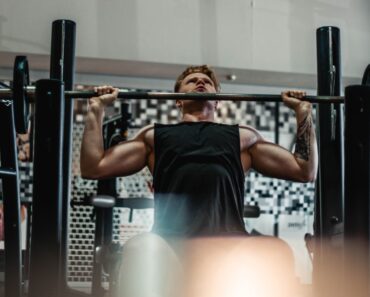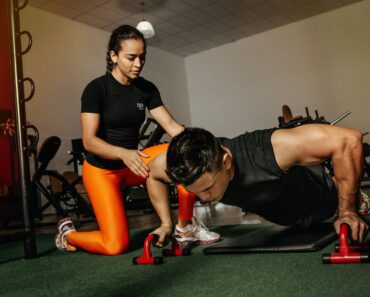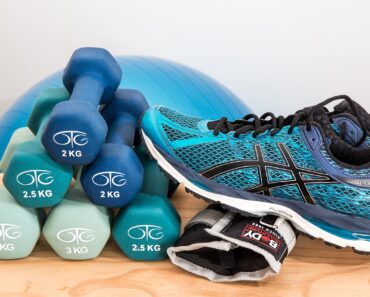ADVERTISEMENT

The menstrual cycle is a natural physiological process that occurs in women of reproductive age, typically lasting about 28 days. During this cycle, hormonal changes drive various physical and emotional changes in a woman’s body. While menstruation itself can be accompanied by discomfort and hormonal fluctuations, it is essential to recognize that the menstrual cycle can also influence exercise performance and recovery.
Understanding the relationship between the menstrual cycle and exercise can help women tailor their workouts to optimize performance, manage energy levels, and enhance overall well-being. In this article, we will explore the different phases of the menstrual cycle and recommend the best exercises suited for each phase, helping women make the most of their fitness journey throughout the entire month.
The Menstrual Cycle: An Overview
The menstrual cycle is divided into four phases, which are regulated by fluctuations in hormone levels:
Menstrual Phase (Day 1-5)
The menstrual phase marks the beginning of the cycle and is characterized by the shedding of the uterine lining, resulting in menstrual bleeding. Hormone levels, particularly estrogen and progesterone, are at their lowest during this phase, and women may experience lower energy levels and increased sensitivity to pain.
Follicular Phase (Day 6-14)
The follicular phase follows menstruation and is characterized by the maturation of ovarian follicles in preparation for ovulation. Estrogen levels begin to rise during this phase, leading to increased energy, improved mood, and enhanced exercise performance.
Ovulation Phase (Day 14)
Ovulation occurs approximately midway through the menstrual cycle when a matured egg is released from the ovary. Estrogen levels reach their peak during ovulation, leading to improved athletic performance and increased endurance.
Luteal Phase (Day 15-28)
The luteal phase begins after ovulation and is characterized by the formation of the corpus luteum, which produces progesterone. Progesterone levels rise during this phase, leading to potential water retention, bloating, and decreased exercise performance.
Exercise and the Menstrual Cycle: Considerations
The impact of the menstrual cycle on exercise varies from woman to woman. Some women may experience minimal changes, while others may notice significant differences in their energy levels, strength, and performance. Understanding these variations can help women adapt their exercise routines to accommodate the natural fluctuations in hormone levels.
Listen to Your Body
It is essential to listen to your body and be mindful of how you feel throughout your menstrual cycle. If you experience fatigue or discomfort during certain phases, consider adjusting the intensity or type of exercise accordingly.
Stay Hydrated
Proper hydration is crucial throughout the entire menstrual cycle, as hormone fluctuations can affect fluid balance in the body. Ensure you drink enough water to support your exercise performance and overall well-being.
Adjust Intensity
During the menstrual phase and early follicular phase when hormone levels are lower, consider reducing the intensity of your workouts and focusing on gentle exercises like walking, yoga, or light cardio.
Hormonal Birth Control
It is essential to consider the impact of hormonal birth control on exercise performance and recovery, as it can alter hormone levels and affect how you feel during different phases of the menstrual cycle.
Best Exercises for Each Menstrual Cycle Phase
Menstrual Phase (Day 1-5)
During the menstrual phase, women may experience lower energy levels and increased sensitivity to pain. It is essential to engage in exercises that promote relaxation and support the body during this time.
a. Yoga: Gentle yoga poses can help relieve menstrual cramps, reduce stress, and promote relaxation. Focus on restorative and gentle yoga practices that emphasize deep breathing and stretching.
b. Walking: Taking short walks can be beneficial during this phase, as it helps to promote blood circulation and reduces bloating and discomfort.
c. Pilates: Pilates exercises that target the core and pelvic floor muscles can be gentle yet effective during menstruation.
Follicular Phase (Day 6-14)
During the follicular phase, estrogen levels rise, leading to increased energy and improved exercise performance. This is an excellent time to focus on strength training and high-intensity workouts.
a. Strength Training: During this phase, estrogen enhances muscle protein synthesis, making it an optimal time for strength training to build muscle and improve strength.
b. High-Intensity Interval Training (HIIT): With increased energy levels and improved endurance, HIIT workouts can be highly effective during the follicular phase.
c. Running or Cycling: Engage in cardio activities like running or cycling to take advantage of the increased endurance during this phase.
Ovulation Phase (Day 14)
The ovulation phase marks the peak of estrogen levels, leading to improved athletic performance and endurance. This is an excellent time to challenge yourself and engage in more demanding workouts.
a. High-Intensity Workouts: Capitalize on the peak hormone levels and engage in high-intensity workouts to maximize performance.
b. Circuit Training: Circuit training that combines strength and cardio exercises can be highly effective during ovulation.
c. Dancing or Zumba: Fun and energetic activities like dancing or Zumba can be enjoyable during this phase.
Luteal Phase (Day 15-28)
During the luteal phase, progesterone levels rise, potentially leading to water retention, bloating, and decreased exercise performance. It is essential to focus on exercises that support the body and promote relaxation.
a. Low-Impact Cardio: Engage in low-impact cardio exercises like swimming or stationary cycling to reduce stress on the joints.
b. Yoga and Stretching: Continue with yoga and stretching exercises to promote relaxation and reduce muscle tension.
c. Mindful Movement: Activities like tai chi or qigong can be beneficial during the luteal phase, promoting mind-body connection and reducing stress.
Conclusion
The menstrual cycle can have a significant impact on exercise performance and recovery. By understanding the different phases of the menstrual cycle and how they affect the body, women can tailor their exercise routines to optimize performance and overall well-being throughout the entire month.
During the menstrual phase, focus on gentle exercises like yoga and walking to support the body during menstruation. As estrogen levels rise during the follicular phase, take advantage of increased energy and engage in strength training and high-intensity workouts. During ovulation, challenge yourself with high-intensity exercises and activities that push your endurance limits. Finally, during the luteal phase, focus on exercises that support relaxation and promote a mind-body connection.
Remember to listen to your body, stay hydrated, and make adjustments to your exercise routine as needed. Each woman’s experience with the menstrual cycle and exercise is unique, so finding what works best for you is essential. Embrace the natural fluctuations of your body and use them to optimize your fitness potential and enhance your overall well-being.
ADVERTISEMENT





